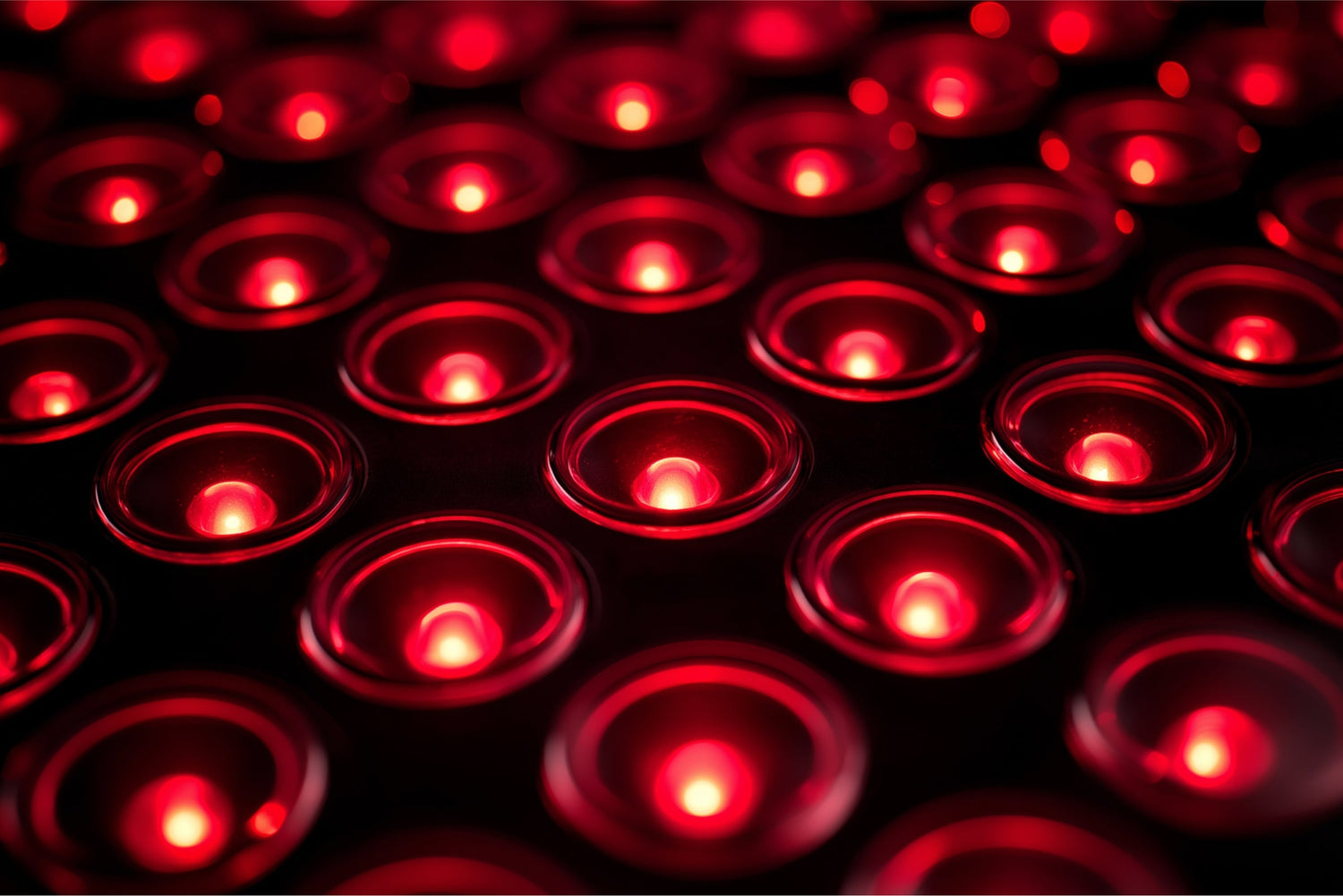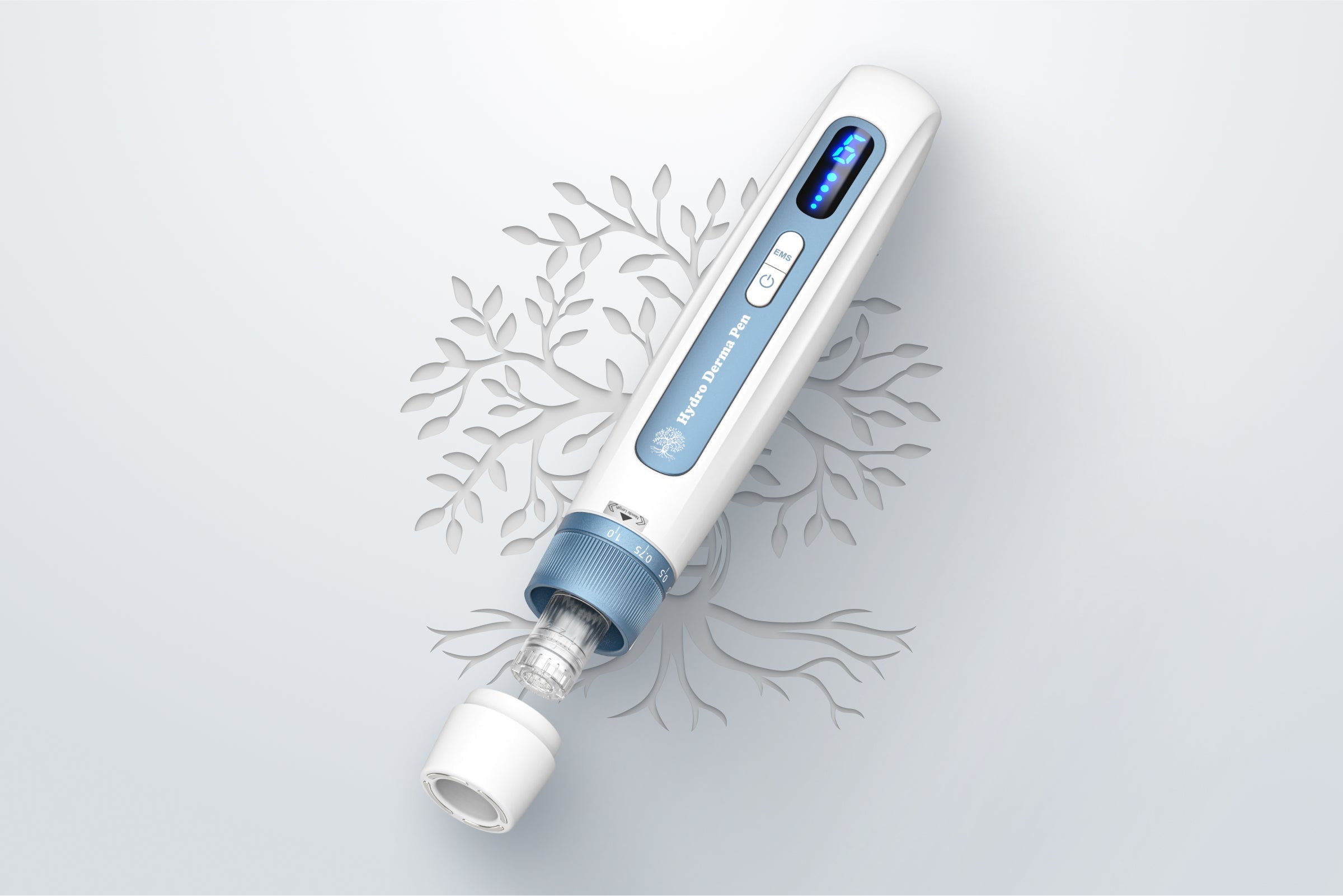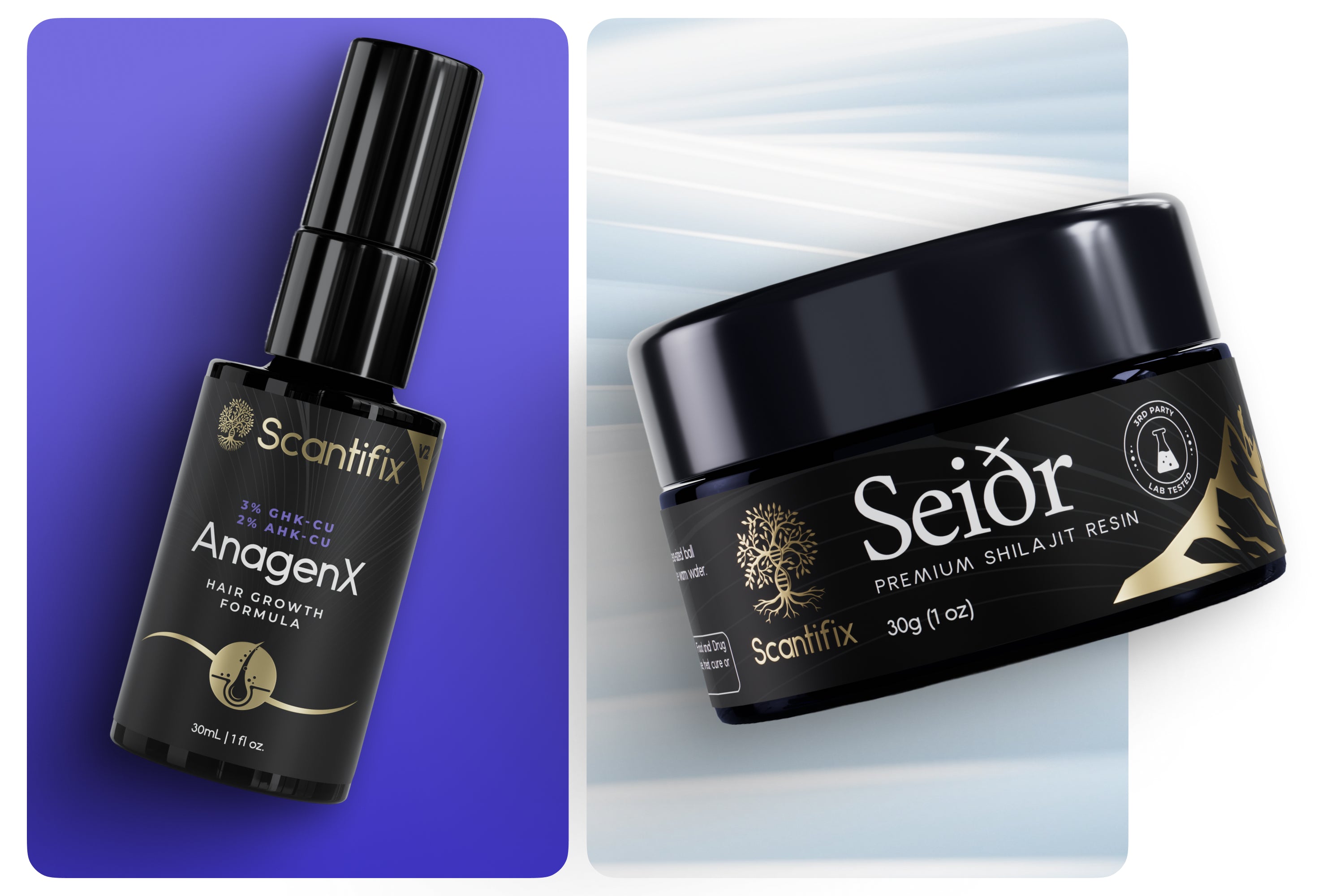Treating aging skin doesn’t have to involve needles, harsh chemicals, or trips to the clinic. Non-invasive facial treatments are a real option and they can offer meaningful results to those looking for a more gentle or less-disruptive approach to anti-aging benefits. One treatment supported by growing scientific evidence is red light therapy, which works by stimulating the body’s own regenerative processes to improve skin firmness, reduce wrinkles, and support overall skin health.
In this guide, we’ll explore how red therapy works, its anti-aging benefits, how it stacks up to the more invasive approaches, and how it can fit seamlessly into your routine.
How Red Light Therapy Works at the Cellular Level
Red and near-infrared light, typically in the 630 to 850 nanometer (nm) range, can penetrate below the surface of the skin. These wavelengths are absorbed by mitochondria, the energy-producing structures inside cells. When stimulated, mitochondria increase production of adenosine triphosphate (ATP), the molecule that fuels most cellular functions.
This boost in cellular energy supports several processes relevant to skin health:
- Activation of fibroblasts, which produce collagen and elastin
- Improved circulation, which enhances oxygen and nutrient delivery
- Modulation of inflammation and oxidative stress (Avci et al., 2013)
Unlike more aggressive treatments that rely on controlled damage to trigger repair, red light therapy helps restore and strengthen skin without causing irritation or disrupting its natural barrier. This makes it a valuable option not only for sensitive or aging skin, but for anyone seeking a gentler alternative to more aggressive interventions.
Anti-Aging Benefits of Red Light Therapy
Many of red light therapy’s anti-aging effects stem from its ability to improve skin function at the cellular level. Let’s take a closer look at the specific ways it helps reduce visible signs of aging, starting with the foundations of skin structure and firmness.
Stimulates Collagen and Elastin Production
Collagen gives skin its structure and firmness, while elastin contributes to elasticity and resilience. Both proteins decline with age, leading to thinner, looser skin. Red light therapy has been shown to increase the expression of collagen and elastin by activating fibroblasts and supporting extracellular matrix renewal (Kim et al., 2019).
In one clinical trial, participants experienced significant increases in collagen and elastic fibers along with improved skin elasticity, with up to a 19% improvement after four weeks of LED phototherapy administered twice weekly (Lee et al., 2007). These findings reinforce red light therapy’s role in supporting skin firmness and elasticity over time, making it a smart addition to any well-rounded anti aging facial routine.
Reduces Fine Lines and Wrinkles
Consistent use of red light therapy has been associated with reductions in both superficial and deeper facial wrinkles. In a clinical study, participants receiving nine sessions of combined red (633 nm) and near-infrared (830 nm) LED therapy over 5 weeks showed significant improvements in skin smoothness and wrinkle depth, with 81% reporting improved wrinkles around the eyes and 52% demonstrating 25–50% improvement in overall skin aging at 12-week assessment (Russell et al., 2005).
The findings point to a measurable reduction in the depth and visibility of established lines, particularly in delicate facial areas. Red light therapy presents a compelling case for being the best treatment for deep wrinkles on the face without invasive techniques.
Improves Skin Texture and Tone
Skin texture is closely tied to underlying cell health, collagen density, and surface hydration. Red light therapy has been shown to support all three through gentle stimulation of cellular renewal. In a randomized controlled trial involving 136 participants, those who received red and near-infrared light treatments experienced measurable improvements in skin roughness, tone, and overall texture quality. Participants also reported a more even complexion and smoother skin feel, with objective analysis confirming reduced surface irregularities (Wunsch & Matuschka, 2014).
These outcomes reflect red light therapy’s ability to enhance dermal collagen density and promote more efficient cellular turnover. Over time, this can lead to a visibly refined, more even-toned appearance without harsh exfoliation or resurfacing.
Enhances Skin Hydration and Barrier Function
Red light therapy supports the skin’s ability to retain moisture and maintain a healthy barrier, which are both essential for long-term skin resilience. One of the key mechanisms is its ability to stimulate the production of hyaluronic acid, a naturally occurring molecule that holds up to 1,000 times its weight in water and plays a vital role in skin hydration.
In clinical research, red and near-infrared LED treatments significantly increased expression of the HAS2 gene, which drives hyaluronic acid synthesis in human fibroblasts, within just three days of treatment (Kim et al., 2019). The same study also observed increased production of hyaluronic acid protein alongside collagen and elastin, indicating a broader improvement in skin structure and hydration capacity.
A stronger moisture barrier helps the skin retain water, reduce irritation, and protect against environmental stressors that contribute to visible aging. Over time, this leads to skin that appears smoother, more supple, and better able to maintain its integrity.
Red Light Therapy vs. Invasive Anti-Aging Treatments
Traditional anti-aging interventions such as Botox, dermal fillers, laser resurfacing, and chemical peels work by either paralyzing muscle movement or creating micro-damage to force skin regeneration. While effective for some, these options can involve side effects, require repeat visits, and often come with downtime.
Potential drawbacks include:
- Temporary bruising or swelling
- Skin sensitivity or peeling
- Risk of overcorrection or unnatural results
- High maintenance costs over time
In contrast, non-invasive facial treatments like red light therapy work gradually by strengthening the skin from within. Instead of forcing change, red light therapy supports the body’s own processes. It’s a great option for individuals seeking a deep wrinkle treatment that aligns with a more natural or minimalistic skincare philosophy.
What to Expect: Results and Timing
Red light therapy works progressively. You may start to see subtle improvements in hydration and glow within a few weeks, but more significant changes like firmer texture or reduced wrinkle depth typically take 8 to 12 weeks of consistent use. In clinical studies, participants showed measurable improvements after 4 weeks of treatment (Kim et al., 2019), with continued enhancement through 12-week follow-up assessments (Russell et al., 2005).
A commonly used routine involves 10 to 20 minutes per session, repeated three to five times per week. However, skin type, age, and treatment goals all influence response. Consult with a dermatologist to find the right schedule and device settings for your individual needs. This kind of personalized plan helps ensure that red light therapy remains a safe and sustainable part of your anti aging facial routine.
Why Red Light Therapy Is Ideal for At-Home Use
Red light therapy offers a unique combination of safety, accessibility, and flexibility that makes it well-suited for at-home use. Unlike more aggressive options like chemical peels or laser resurfacing, it carries minimal risk when used as directed and doesn’t require professional supervision between sessions.
It’s also cost-effective. A high-quality LED mask can pay for itself within a few months, making long-term use more accessible than repeated in-office treatments. Another plus is that there's no need for appointments or travel. At-home use allows for consistent sessions that fit into your schedule.
Because it’s gentle, red light therapy can be easily integrated into your existing anti aging facial routine without interrupting other skincare steps. For anyone seeking a practical and sustainable approach to skin maintenance, it remains one of the most accessible non-invasive facial treatments available.
If you’re ready to begin, our Reviva Lux Red Light Therapy Face Mask is designed to deliver professional-level benefits with the comfort and consistency of at-home use.
Reviva Lux Red Light Therapy Mask: Luxury Quality, Convenient Usage, Professional Results
We carefully designed the Reviva Lux Red Light Therapy Face Mask to deliver clinical-grade light therapy in a form that’s safe, effective, and effortless to use at home. It features:
- 240 high-end LED chips for full-face coverage with optimal wavelength delivery (630–850nm)
- Hypoallergenic, breathable silicone for a soft, skin-friendly fit
- No EMF exposure for peace of mind during regular use
- Flicker-free, premium LED technology to ensure stable light delivery
- Cord-free design with a rechargeable battery pack for convenience and portability
With consistent use, Reviva Lux supports:
- Increased collagen and elastin production
- Reduction in fine lines and deep wrinkles
- Improved skin tone, firmness, and texture
Reviva Lux was developed to meet a higher standard. The mask’s thoughtful construction makes it easy to use regularly, while its performance is backed by research-driven light parameters and clean, skin-safe materials. If you’re looking for a non-invasive anti-aging treatment that fits seamlessly into your skincare habits, Reviva Lux delivers.
References
Avci, P., Gupta, A., Sadasivam, M., Vecchio, D., Pam, Z., Pam, N., & Hamblin, M. R. (2013). Low-level laser (light) therapy (LLLT) in skin: Stimulating, healing, restoring. Seminars in Cutaneous Medicine and Surgery, 32(1), 41–52. https://pubmed.ncbi.nlm.nih.gov/24049929/
Kim, B., Mukherjee, A., Seo, S., Ali, F., Southall, M., & Parsa, R. (2019). Low-level red and infrared light increases expression of collagen, elastin, and hyaluronic acid in skin. Journal of the American Academy of Dermatology, 81(4), AB434. https://doi.org/10.1016/j.jaad.2019.10.089
Lee, S. Y., Park, K. H., Choi, J. W., Kwon, J. J., & Lee, W. S. (2007). A prospective, randomized, placebo-controlled, double-blinded, and split-face clinical study on LED phototherapy for skin rejuvenation. Journal of Photochemistry and Photobiology B: Biology, 88(1), 51–67. https://pubmed.ncbi.nlm.nih.gov/17566756/
Russell, B. A., Kellett, N., & Reilly, L. R. (2005). A study to determine the efficacy of combination LED light therapy (633 nm and 830 nm) in facial skin rejuvenation. Journal of Cosmetic and Laser Therapy, 7(3–4), 196–200. https://doi.org/10.1080/14764170500370059
Wunsch, A., & Matuschka, K. (2014). A controlled trial to determine the efficacy of red and near-infrared light treatment in patient satisfaction, reduction of fine lines, wrinkles, skin roughness, and intradermal collagen density increase. Photomedicine and Laser Surgery, 30(2), 93–100. https://doi.org/10.1089/pho.2013.3616





Leave a comment
All comments are moderated before being published.
This site is protected by hCaptcha and the hCaptcha Privacy Policy and Terms of Service apply.